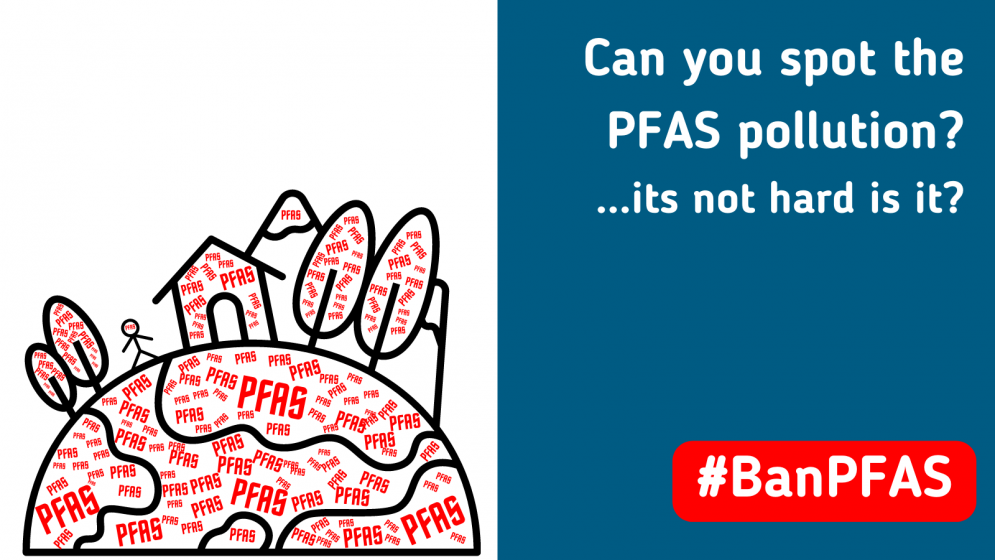Fidra has joined 29 other environmental and health NGOs in calling on DEFRA for urgent, group-based regulation of PFAS to prevent continued PFAS pollution in the UK environment.
There is now unequivocal evidence that per- and poly-fluorinated alkyl substances, PFAS, have caused global contamination of the environment, wildlife and human populations. Some chemicals in this group have strong links to testicular and kidney cancer, hypertension, high cholesterol, and thyroid disease.
The letter sent to the UK Government’s Secretary of State for Environment, Food and Rural Affairs, George Eustice and Minister for Agri-Innovation and Climate Adaptation, Jo Churchill on the 28th May is calling for the grouped restriction of PFAS to protect current and future generations. Our statement and letter have been submitted to Defra as they assess PFAS regulation as part of a regulatory management options analysis (RMOA). An RMOA is intended to help authorities decide the most appropriate actions to address chemicals of concern. Our joint statement has provided essential references and reliable data to the Health and Safety Executive (HSE) for the RMOA process. 
We hope that the UK Government will use this opportunity to keep pace with regulatory changes happening at the EU level as Germany, Norway, Denmark, Sweden, and the Netherlands prepare a joint PFAS group restriction dossier.
Alongside other recommendations (which you can also read in our statement), there are recommendations to take immediate action to phase out PFAS where suitable alternatives are already in regular use across the UK market (e.g. in food packaging), and to take immediate action to prevent products containing high levels of PFAS from being marketed as ‘compostable’. You can find out more about the problems caused by PFAS presence in compostable packaging here, and Fidra’s work on PFAS in food packaging here.
We are hopeful that the precautionary principle, as enshrined in the UK Environment Act 2021, is enacted with PFAS regulation in mind. The RMOA is due to be published later this year.
The statement is still open for signatories. If you represent a relevant NGO and wish to add your support, please send an organisational logo to info@fidra.org.uk.
Fidra has joined 29 other environmental and health NGOs in calling on DEFRA for urgent, group-based regulation of PFAS to prevent continued PFAS pollution in the UK environment.
There is now unequivocal evidence that per- and poly-fluorinated alkyl substances, PFAS, have caused global contamination of the environment, wildlife and human populations. Some chemicals in this group have strong links to testicular and kidney cancer, hypertension, high cholesterol, and thyroid disease.
The letter sent to the UK Government’s Secretary of State for Environment, Food and Rural Affairs, George Eustice and Minister for Agri-Innovation and Climate Adaptation, Jo Churchill on the 28th May is calling for the grouped restriction of PFAS to protect current and future generations. Our statement and letter have been submitted to Defra as they assess PFAS regulation as part of a regulatory management options analysis (RMOA). An RMOA is intended to help authorities decide the most appropriate actions to address chemicals of concern. Our joint statement has provided essential references and reliable data to the Health and Safety Executive (HSE) for the RMOA process. 
We hope that the UK Government will use this opportunity to keep pace with regulatory changes happening at the EU level as Germany, Norway, Denmark, Sweden, and the Netherlands prepare a joint PFAS group restriction dossier.
Alongside other recommendations (which you can also read in our statement), there are recommendations to take immediate action to phase out PFAS where suitable alternatives are already in regular use across the UK market (e.g. in food packaging), and to take immediate action to prevent products containing high levels of PFAS from being marketed as ‘compostable’. You can find out more about the problems caused by PFAS presence in compostable packaging here, and Fidra’s work on PFAS in food packaging here.
We are hopeful that the precautionary principle, as enshrined in the UK Environment Act 2021, is enacted with PFAS regulation in mind. The RMOA is due to be published later this year.
